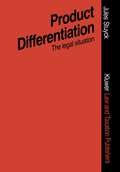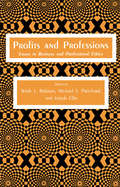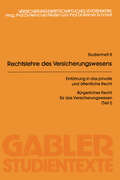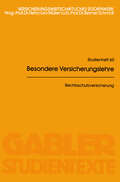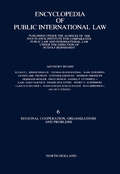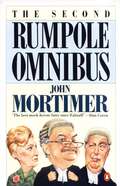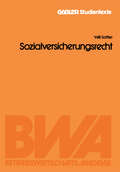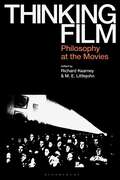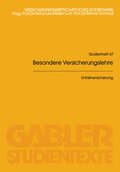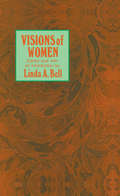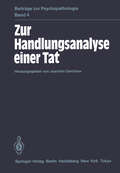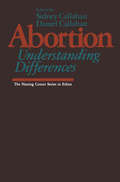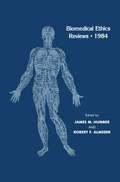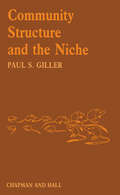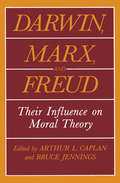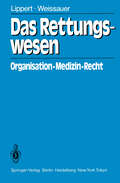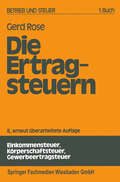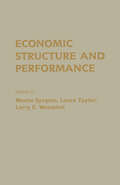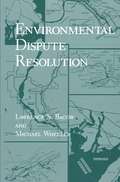- Table View
- List View
Product Differentiation in Terms of Packaging Presentation, Advertising, Trade Marks, ETC.: An Assessment of the Legal Situation Regarding Pharmaceuticals and Certain Other Consumer Goods
by Jules StuyckWith consumer goods, as weil as consumer durables, the market is obscured because of product differentiation, in for example, the use, of trade marks, and the advertising and get-up of products, and this presents arealproblern in the protection of consumers. After a general demarcation of the forms, techniques and functions of product differentiation, an investigation is made into the correlation between the law and product differentiation; first, regarding pharmaceutical products and, then, though only by way of reconnaissance, for foodstuffs and cosmetics. Both in the general descriptive part and in the parts dealing with various sectors, attention is also paid to product differentiation as a source of the geographical division of markets. In a later chapter, certain general Observations on the law and socially undesirable product differentiation are developed. Here special attention is paid to trade mark law and regulations relating to misleading and dishonest advertising. The survey shows that, in the light of the existing economic model, improved consumer protection against the representation of product differ ences which hardly exist, can best be effected by means of regulations and other initiatives concerned with the supply of information, such as labelling requirements. September 1981 Dr. Jules Stuyck IX Table of Contents The first figure indicates the subsection number and the second figure the page number.
Profits and Professions: Essays in Business and Professional Ethics (Contemporary Issues in Biomedicine, Ethics, and Society)
by Wade L. Robison Michael S. Pritchard Joseph EllinSuppose an accountant discovers evidence of shady practices while ex amining the books of a client. What should he or she do? Accountants have a professional obligation to respect the confidentiality of their cli ents' accounts. But, as an ordinary citizen, our accountant may feel that the authorities ought to be informed. Suppose a physician discov ers that a patient, a bus driver, has a weak heart. If the patient contin ues bus driving even after being informed of the heart condition, should the physician inform the driver's company? Respect for patient confidentiality would say, no. But what if the driver should suffer a heart attack while on duty, causing an accident in which people are killed or seriously injured? Would the doctor bear some responsibility for these consequences? Special obligations, such as those of confidentiality, apply to any one in business or the professions. These obligations articulate, at least in part, what it is for someone to be, say, an accountant or a physician. Since these obligations are special, they raise a real possibility of con flict with the moral principles we usually accept outside of these spe cial relationships in business and the professions. These conflicts may become more accentuated for a professional who is also a corporate employee-a corporate attorney, an engineer working for a construction company, a nurse working as an employee of a hospital.
Regional Cooperation, Organizations and Problems
by Rudolf BernhardtEncyclopedia of Public International Law, 6: Regional Cooperation, Organizations, and Problems focuses on regional organizations, cooperation, and problems, including boundary disputes, membership, and functions of organizations. The publication first elaborates on the American-Canadian Boundary Disputes and Cooperation, American-Mexican Boundary Disputes and Cooperation, Andean common market, League of Arab States, and the Association of South-east Asian Nations. Discussions focus on structure and organization, activities, evaluation, membership, functions, and establishment, objectives, and principles. The text then examines the Balkan Pact of 1953/1954, Belgium-Luxembourg Economic Union, Benelux Economic Union, and boundary disputes between China and USSR. The manuscript considers the boundary disputes in Latin America and Africa, Council for Mutual Economic Assistance, European Atomic Energy Community, European Coal and Steel Community, and the European Conference of Postal and Telecommunications Administrations. The publication also takes a look at the Economic Community of West African States, European Atomic Energy Community, and the European Atomic Energy Society. The book is a vital source of information for researchers interested in regional organizations, cooperation, and problems.
The Second Rumpole Omnibus
by John MortimerThe Second Rumpole Omnibus - a classic collection of John Mortimer's greatest character'Rumpole, like Jeeves and Sherlock Holmes, is immortal' P. D James, Mail on Sunday'I thank heaven for small mercies. The first of these is Rumpole' Clive James, ObserverHorace Rumpole turns down yet another invitation to exchange the joys and sorrows of life as an Old Bailey hack for the delights of the sunshine state, where Senior Citizens loll on beaches and the sarcastic tones of the Mad Bull (Judge Roger Bullingham) are heard no more. He settles instead for the beaded bubbles of Chateau Pommeroy's ordinary claret, the domestic chill emanating from She Who Must Be Obeyed, and his role 'extraordinaire' as Defender of the Faith: 'Never plead guilty'.This wonderful collection of Rumpole will be loved by fans of John Mortimer, as well as readers of Sherlock Holmes, P.D. James and P.G. Wodehouse.'One of the great comic creations of modern times' Evening Standard'There is a truth in Rumpole that is told with brilliance and grace' Daily Telegraph'Rumpole remains and absolute delight' The Times Sir John Mortimer was a barrister, playwright and novelist. His fictional political trilogy of Paradise Postponed, Titmuss Regained and The Sound of Trumpets has recently been republished in Penguin Classics, together with Clinging to the Wreckage and his play A Voyage round My Father. His most famous creation was the barrister Horace Rumpole, who featured in four novels and around eighty short stories. His books in Penguin include: The Anti-social Behaviour of Horace Rumpole; The Collected Stories of Rumpole; The First Rumpole Omnibus; Rumpole and the Angel of Death; Rumpole and the Penge Bungalow Murders; Rumpole and the Primrose Path; Rumpole and the Reign of Terror; Rumpole and the Younger Generation; Rumpole at Christmas; Rumpole Rests His Case; The Second Rumpole Omnibus; Forever Rumpole; In Other Words; Quite Honestly and Summer's Lease.
Sozialgeschichte des Naturrechts (Beiträge zur sozialwissenschaftlichen Forschung #42)
by Stefan BreuerThinking Film: Philosophy at the Movies
by Richard Kearney and M. E. LittlejohnHailed as one of America's original art forms, film has the distinctive character of crossing high and low art. But film has done more than this. According to American philosopher Stanley Cavell, film was also a place where America in the 1930s and 1940s did its thinking, a tradition that was taken up and enriched throughout world cinema. Can film indeed think? That is, can film do the work of philosophy?Following Cavell's lead to think along the tear of the analytic-continental traditions, this book draws from both sides of the philosophical divide to reflect on this question. Spanning generations and disciplines, pondering everything from art house classics to mainstream blockbusters, Thinking Film: Philosophy at the Movies aims to fling open the doors to this conversation on all sides. Inquiring into both philosophy's word on film and film's word to philosophy, the interdisciplinary dialogue of this book traverses the conceptual and the particular as it considers how film catalyzes our thinking and sets us talking. After viewing the world through film, we find our world--and ourselves--transformed by deeper understanding and new possibilities.This book aims to provide a novel and engaging way in to thinking with and about this enduringly popular art form.
Visions of Women: Being a Fascinating Anthology with Analysis of Philosophers’ Views of Women from Ancient to Modern Times (Contemporary Issues in Biomedicine, Ethics, and Society)
by Linda A. BellPeople of Socrates' time were frequently aghast at the questions he would ask. Their responses were of the sort elicited by very dumb or ex tremely obvious questions: "Don't you know? Everyone else does. " Socrates was hardly alone in his knack for asking such questions. Phi losophers have always asked peculiar questions most other people would never dream of asking, convinced as the latter are that the answers were settled long ago in the collective "wisdom" of society, including ques tions about woman: should women be educated? should they rule socie ties? should they be subordinate in marriage? do women and men have the same virtues, or are there separate virtues for each? which of the dif ferences between women and men are conventional, and which are natu ral? is there a woman's work? do women and men have different types or degrees of rationality? Philosophers of the most diverse periods have raised these questions and their answers were often quite creative, not merely reflecting the conventions and mores of their societies. With the publication of this anthology, their writings will be brought together in a single volume for the first time. This anthology differs from others not just in its inclusiveness. It also contains several translations of material previously unavailable in English.
Vorvertragliche Anzeigepflicht: Nach österreichischem und deutschem Recht. Zugleich ein Beitrag zur Vertreterrolle des Versicherungsagenten (Linzer Universitätsschriften #10)
by H. KeinertAnliegen des Versicherungsvertragsgesetzes war weine ange messene Ausgleichung zwischen den Interessen der Versicherer u und der Versicherungsnehmer (Begriindung zu den Entwiirfen des VersVG [1906] 4). Von diesem Streben nach ausgewogener Beriick sichtigung der berechtigten Interessen beider Gruppen lafit sich auch diese Monographie leiten. Sie untersucht einzelne, praktisch besonders wichtige Problemkreise der vorvertraglichen Anzeige pflicht, die von den moglichen Konsequenzen der Obliegenheits verletzung - der Arglistanfechtung durch den Versicherer, vor allem aber von seinem Riicktritt -her aufgerollt werden. Wie stets im Versicherungsrecht spielen Probleme des biirgerli chen Rechts eine besondere Rolle; dazu tritt seit 19'19 das Konsu mentenschutzgesetz. Von den daraus resultierenden, nicht allzu gewichtigen Unterschieden zum deutschen Recht abgesehen, ist die Untersuchung auch fUr dieses verwendbar, zumal das Versiche rungsvertragsgesetz, aber auch das Handelsgesetzbuch der deut schen und der osterreichischen Rechtsordnung in nahezu identi scher Fassung angehoren. Dazu kommt, daB versicherungsrechtli ches Arbeiten in Osterreich angesichts des iiberaus sparlichen eigenen Schrifttums weitestgehend auf die Auseinandersetzung mit deutscher Literatur und deutscher Rechtsprechung angewie sen ist.
Abortion: Understanding Differences (The Hastings Center Series in Ethics)
by Sidney Callahan and Daniel CallahanSIDNEY CALLAHAN AND DANIEL CALLAHAN This book, like many other things to do with abortion, is a product of long controversy. Though carried out with cooperation, it was conceived in conflict. The conflict between the coeditors has per sisted for years-in fact, for at least half of their thirty-year marriage. One, Sidney, is prolife; the other, Daniel, is prochoice. Ever since the topic of abortion became of professional interest to us, in the 1960s, we have disagreed. At one time, while Daniel was writing a book on the subject, Abortion: Law, Choice and Morality (1970), we talked about the subject every day for the four years of the book's gestation. On many occasions during the 1970s, prolife articles writ ten by Sidney were passed out at Daniel's lectures in order to refute his pro choice views. Over the years, every argument, every statistic, every historical example cited in the literature has been discussed by the two of us. As Eliza Doolittle says about "words" in My Fair Lady, "There's nota one I haven't heard. " And yet we still disagree. How can it be, we ask ourselves, that intelligent people of goodwill who know all the same facts and all the same arguments still come down on different sides of the con troversy? As we well know, it is possible to agree about many things and have great love and respect for an opponent, and still differ.
Allgemeines Verwaltungsrecht (Springers Kurzlehrbücher der Rechtswissenschaft)
by Ludwig K. Adamovich Bernd-Christian FunkBiomedical Ethics Reviews · 1984 (Biomedical Ethics Reviews)
by James M. Humber Robert F. AlmederThis is the second volume of Biomedical Ethics Reviews, a series of texts designed to review and update the literature on issues of central importance in bioethics today. Five topics are dis cussed in the present volume. Section I, Public Policy andRe search with Human Subjects, reviews the history of the moral issues involved in the history of research with human subjects, and confronts most of the major legal and moral problems involving research on human subjects. Questions addressed in this section range from those concerning informed and proxy consent to those dealing with the adequacy of monitoring hu man research via institutional review boards (IRBs). Section II deals with a second broad topic in bioethics, The Right to Health Care in a Democratic Society. Here the concern not merely that of determining whether there is a right to is health care, but also, if there is such a right, how it ought best be understood and implemented. To answer questions such as these, we learn that one must distinguish legal from moral rights, assess the merits of various theories of rights, clarify the relationship between rights and duties, and attempt to deter mine a just method for the distribution of health care. Advances in medical technology often pose new legal and moral problems for legislators and health care practitioners.
Community Structure and the Niche
by Paul S. GillerDuring the past two decades, there has been a gradual change of emphasis in ecological studies directed at unravelling the complexity of natural communities. Initially, the population approach was used, where interest lay in the way individual populations change and in the identification of factors af fecting these changes. A good understanding of the dynamics of single populations is now emerging, but this has not been a very fruitful approach at the community level. In the natural world, few species can be treated as isolated populations, as most single species are the interacting parts of multispecies systems. This has led to a community approach, involving the study of interrelationships between species within com munities and investigation of the actual organization of natural communities as a whole. The formalization of a number of new concepts and ideas has evolved from this approach, including niche theory, resource allocation, guild structure, limiting similarity, niche width and overlap etc. , which, until fairly recently, have been examined mainly from a theoretical point of view. However, a wealth of field data is gradually being added to the literature, especially from the general areas of island biogeography and resource partitioning amongst closely related species. Community structure embodies patterns of resource allocation and spatial and temporal abundance of species of the community, as well a. '1 community level properties such as trophic levels, succession, nutrient cycling etc.
Darwin, Marx and Freud: Their Influence on Moral Theory (The Hastings Center Series in Ethics)
by BruceJennings Arthur L. Caplanhope of obtaining a comprehensive and coherent understand ing of the human condition, we must somehow weave together the biological, sociological, and psychological components of human nature and experience. And this cannot be done indeed, it is difficult to even make sense of an attempt to do it-without first settling our accounts with Darwin, Marx, and Freud. The legacy of these three thinkers continues to haunt us in other ways as well. Whatever their substantive philosophical differences in other respects, Darwin, Marx, and Freud shared a common, overriding intellectual orientation: they taught us to see human things in historical, developmental terms. Phil osophically, questions of being were displaced in their works by questions of becoming. Methodologically, genesis replaced teleological and essentialist considerations in the explanatory logic of their theories. Darwin, Marx, and Freud were, above all, theorists of conflict, dynamism, and change. They em phasized the fragility of order, and their abiding concern was always to discover and to explicate the myriad ways in which order grows out of disorder. For these reasons their theories constantly confront and challenge the cardinal tenet of our modern secular faith: the notion of progress. To be sure, their emphasis on conflict and the flux of change within the flow of time was not unprecedented; its origins in Western thought can be traced back at least as far as Heraclitus.
Economic Structure and Performance
by Hollis B. CheneryEconomic Structure and Performance: Essays in Honor of Hollis B. Chenery briefly reviews the work of Hollis Chenery in the field of economics. This book discusses the underlying themes in Chenery's work, including structure, strategy, adjustment, and models.Organized into four parts encompassing 26 chapters, this book begins with an overview of the patterns of structural change and their relation to growth. This text then examines the objectives, measures, and implementation of policy, as well as administrative capabilities and cultural characteristics. Other chapters compare Chenery's econometric analysis of development patterns with the historical analyses and suggest that the two approaches complement each other. This book discusses as well the persistence of disequilibrium in segments of the economy. The final chapter deals with simple criteria for detecting critical interdependencies and a formula for measuring their welfare consequences.This book is a valuable resource for economists, industrialists, foreign capitalists, and social scientists.
Environmental Dispute Resolution (Environment, Development and Public Policy: Environmental Policy and Planning)
by Lawrence S. Bacow Michael WheelerThis book has its origins in an M.I.T. research project that was funded by the U.S. Environmental Protection Agency (EPA). Our immediate objective was to prepare a set of case studies that examined bargaining and negotiation as they occurred between government, environmental advocates, and regulatees throughout the traditional regulatory process. The project was part of a larger effort by the EPA to make environmental regulation more efficient and less litigious. The principal investigator for the research effort was Lawrence Sus skind of the Department of Urban Studies and Planning. Eight case studies were prepared under the joint supervision of Susskind and the authors of this book. Studying the negotiating behavior of parties as we worked our way through an environmental dispute proved enlightening. We observed missed oppor tunities for settlement, negotiating tactics that backfired, and strategies that ap peared to be grounded more in intuition than in thoughtful analysis. At the same time, however, we were struck by how often the parties ultimately managed to muddle through. People negotiated not out of some idealistic commitment to consensus but because they thought it better served their own interests. When some negotiations reached an impasse, people improvised mediation. These disputants succeeded in spite of legal and institutional barriers, even though few of them had a sophisticated understanding of negotiation.
